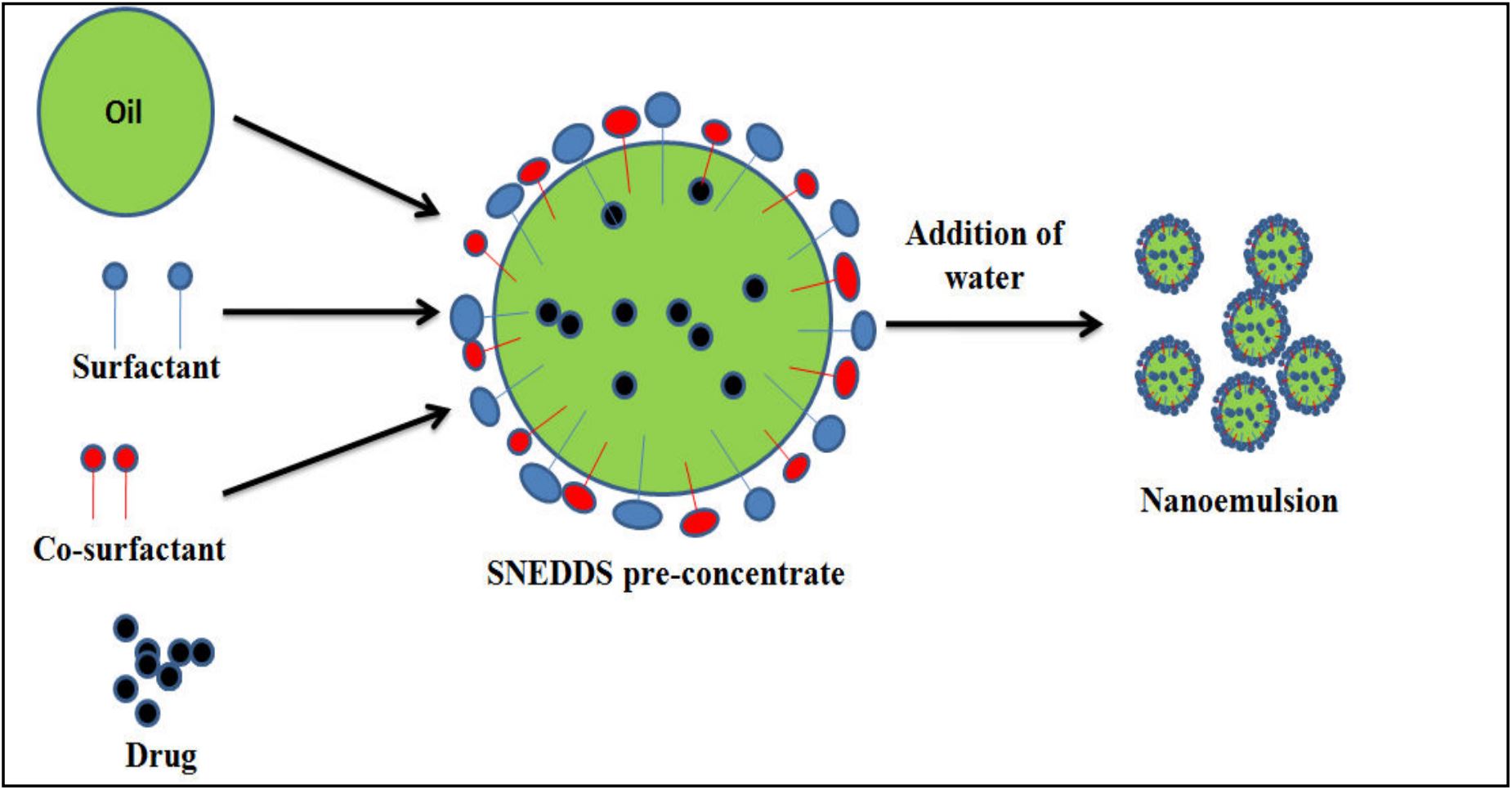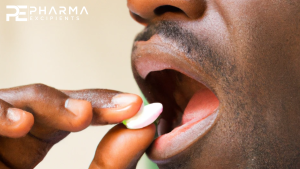Self-Nano-Emulsifying Drug-Delivery Systems: A Limelight on the Development, Advancements and Opportunities in Improving Oral Absorption

Abstract
Back ground: Orally administered medication solubility is a key concern for the pharmaceutical business; about 35-40% of newly introduced pharmaceuticals have less aqueous solubility, resulting in deprived dissolution and limited bio-availability. Employment of lipid-oriented drug release methods like self-nano-emulsifying drug delivery system (SNEDDS), its use to progress drug solubility, permeability, & bio-availability has been extensively reported in literature. A SNEDDS is made up of an oil component, a surfactant & a co-surface active agent. SNEDDS are intended for a broad variety of applications because of their small droplets, high solubility, large interfacial region, low steadiness, transparent or semi-transparent appearance, and extraordinary kinetic reliability. Multiple orthogonal approaches are necessary for SNEDDS characterization in order to thoroughly organize SNEDDS manufacturing, strength, & biological release. The characterization of SNEDDSs includes multiple orthogonal methods required to fully control SNEDDS manufacture, stability, and biological fate. Encapsulating a drug in SNEDDSs can lead to increased
solubilization, stability in the gastro-intestinal tract, and absorption, resulting in enhanced bio-availability. To improve efficacy and patient conformity, a supersaturated, mucus permeating, and tailored SNEDDS can be produced. The
self-emulsification method has proven effective in oral medication delivery.
Introduction
Oral administration is preferred delivery due to its safe nature, patient agreement, & potential for individual administration. Though it’s the most suitable method, it has been limited because of the multiple barriers of gastro intestinal (GI) tract [1,2]. Dissolving inside GI tract is required for absorption, as inadequate dissolution may result in incomplete absorption, less bioavailability, & significant inconsistency after oral release[3]. Lipid oriented preparation is a feasible method for improving aqueous solubilization & enter corporation of lipid-based medicines. Primary purpose is to maintain medications as solution in GI tract [4].
Self-nano emulsifying drug delivery systems (SNEDDSs) are researched (lipid-based drug release systems) in oral medication delivery. SNEDDS is uniform blend of oil, surfactants, & co-surface-active agents having an extraordinary capacity for creating fine oil-in-water (O/W) nano emulsions in the company of aqueous media when agitated moderately. It has a drop size range of >100 nm when dispersed in water [5, 6, 7].
To date, several researches have focused on the SNEDDSs application for the oral path of lipid-oriented substances, but few have introduced the probable of SNEDDSs to improve oral transport of aqueous soluble macromolecules. Current publication provides a thorough review of SNEDDS progress, characterization, & in vitro testing.
Advantages of SNEDDS
- Because they are nanosized, SNEDDS are a viable substitute to more traditional lipophilic compound oral formulations.
- It is predictable to emulsify swiftly in watery contents of abdomen. As a result, the medicine is introduced in solution within nanosized oil droplets. These small droplets would be evacuated from the stomach quickly, leading in quicker medication release throughout the GI tract.
- SNEDDS gives the medicine a substantially wider interfacial region intended for partitioning among oil & water, ensuing in easiness of dissolvability[8].
- Do not rely on the act of enzymes, bile salts or additional actions connected to the stomach’s (fed/fasted) condition.
- SNEDDS minimise unpredictability in absorption rate & extent, and provide predictable plasma levels.
- Improved physico-chemical stability, as well as the facility to pack into forms like capsules, enhance economic feasibility, patient conformity/acceptability, and minimize palatability difficulties.
- An important component is its capacity to keep dosage in solubilized formall through GIT designed for long enough for absorption [9].
Disadvantages SNEDDS
- A high concentration of surfactants/co-surfactants is required for stabilization, and temperature & pH have an effect on its steadiness.
- The Oswald ripening outcome could lead to instability.
- Expensive procedure [10,11].
This review focuses on several aspects of the SNEDDS are highlighted in this review, involving method of preparation, techniques for characterization, advantages, disadvantages, a special emphasis on applications of SNEDDS in various areas.
Mechanism of self-emulsification
When entropy shift which favors scattering/emulsificaion is larger compared to energy crucial to amplify surface occupancy of dispersion, emulsification takes place. Typical emulsion’s free energy is a straight consequence of energy necessary to set up a fresh surface among the oil & aqueous phases. Following equation describes this [12].
ΔG = ΣNπr2σ
Where, ΔG; free energy, N; number of droplets of radius r & σ indicatesinter-facial energy. Because power necessary to construct the emulsion in SNEDDS is very less, emulsification procedure could occur spontaneously [13].
After ingestion, followed by modest agitation caused by gastrointestinal motions, the SNEDDS creates an o/w nanoemulsion with nanometric particles (200 nm) instantly and impulsively[14]. By changing the transfer property, the amplified interfacial area improves drug solubility & permeability [15].
Nanosize droplets disintegrate quickly, allowing for faster medication absorption into the GI system (Figure 1). The SNEDDS dose ranges from 25 mg to 2 g[16]. These are efficiently encapsulated to provide improved stability, palatability, and patient acceptance [17].
Table 1: Current research on SNEDDS (pre-clinical studies)
| Class | Drug | Composition |
|---|---|---|
| Anti-cancer | Docetaxel | Capryol®90,Transcutol®HP, Labrasol® |
| Erlotinib | Tween® 85, Dextran 40, Transcutol HP, Labrasol®, Aerosil 200, Labrafil® M2125 CS | |
| Lycopene | LCT, Cremophor® RH, Tween® 85, Gelucire | |
| Methotrexate | Ethyl oleate, Tween® 80, Propylene glycol | |
| Cardiovascular and anti-hypertensive | Carvedilol | Labrafil® M1944CS, Transcutol®, Tween® 80 |
| Clinidipine | Capryol®90, Transcutol®, Tween®80 | |
| Rosuvastatin | Peceol®, Transcutol® HP, Tween® 80 | |
| Valsartan | Triacetin or Castor oil, PEG 600 | |
| Atenolol | Captex®, Tartaricacid, Oleicacid, Span®80 | |
| Anti-diabetic | Insulin | Miglyol®, Cremophor® RH40, MCM C-10, Ethanol |
| Transcinnamicacid | Cremophor® EL, Isopropylmyristate, PEG 400 | |
| Antioxidant | Resveratrol | Miglyol® 812, https://www.pharmaexcipients.com/product/montanox-80-vg-df-rprd/, Labrasol®, Gelucire® |
| CoenzymeQ10 | Witepsol® H335, Solutol HS 15, Lauroglycol® FCC |
Download the full article as PDF here: Self-Nano-Emulsifying Drug-Delivery Systems
Source: Self-Nano-Emulsifying Drug-Delivery Systems: A Limelight on the Development, Advancements and Opportunities in Improving Oral Absorption, Vyshali Parigela1 & A Vijayalakshmi, Volume 14 Number 01 March 2024
Read also our introduction article on Orally Disintegrating Tablets (ODTs) here:


